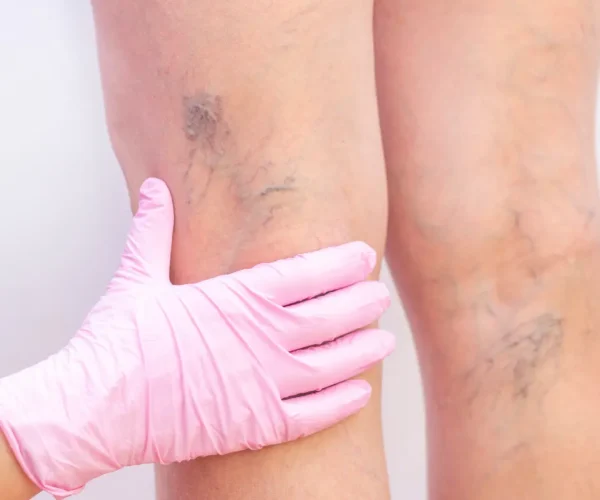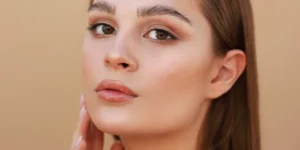Spider veins are a common cosmetic and sometimes symptomatic vascular condition. If you’re researching ways to improve the look and feel of your legs or face without surgery, this guide covers the most effective non-surgical spider vein treatments, how they work, what results to expect, safety considerations, and how to choose a clinic. This article also references trusted medical sources and links directly to Parpar’s spider veins service for those ready to learn more or book a consultation: Parpar — Spider Veins Treatment.
What are spider veins?
Spider veins (telangiectasias) are small, dilated blood vessels visible near the surface of the skin. They often appear as red, blue, or purple lines and may be found on the legs, face, or other areas. While usually harmless, spider veins can cause cosmetic concern or symptoms such as aching, itching, or a feeling of heaviness in the legs.
Common non-surgical spider vein treatments — an overview
There are several non-surgical spider vein treatment options. The most commonly used are sclerotherapy, laser spider vein removal (surface or endovenous laser), foam sclerotherapy/microsclerotherapy, and other minimally invasive vein therapies such as radiofrequency ablation for associated larger venous sources. Which option is best depends on the size, location, and underlying cause of the veins. Reputable clinical resources outline these choices and their typical outcomes.
Sclerotherapy: the gold-standard minimally invasive option
Sclerotherapy is the most widely used non-surgical spider vein treatment for leg veins. During sclerotherapy, a provider injects a sclerosant solution directly into the visible vein. The solution irritates the vein lining, causing it to collapse and be reabsorbed by the body over the following weeks to months. Sclerotherapy is performed in-clinic, usually does not require anesthesia, and patients typically return to normal activities the same day.
Types of sclerotherapy
There are slight variations of sclerotherapy:
- Liquid sclerotherapy: used for many fine spider veins and some small varicose veins.
- Foam sclerotherapy: a foamed sclerosant can be used for larger veins or when improved contact with the vein wall is needed.
- Microsclerotherapy: technique and needle choice for very small superficial veins (commonly used for cosmetic spider veins).
Effectiveness and recovery for sclerotherapy
Most patients see noticeable fading within a few weeks, with full results sometimes taking several months. Some veins require multiple sessions. Side effects can include temporary bruising, hyperpigmentation (brown lines), small surface blood clots, or mild swelling; rare but more significant complications are possible. Sclerotherapy is considered a minimally invasive and effective option for many patients seeking non-surgical spider vein treatment.
Laser spider vein removal (surface and endovenous laser)
Laser spider vein removal uses focused light energy to heat and destroy small veins without injecting a solution. This technique is commonly used for facial spider veins and some leg veins, and it can be a good option when sclerotherapy isn’t ideal (for example, very small facial vessels or when injections are difficult). Laser treatments for spider veins are non-invasive and typically performed in a clinic.
How laser treatment works
A laser device sends targeted light into the skin; hemoglobin in the blood absorbs the light, generating heat that collapses the vein. Over the following weeks to months, the treated vessel fades. Depending on the device and the vein size, multiple sessions may be required.
Effectiveness and safety of laser spider vein removal
Laser therapy may produce excellent results for small facial spider veins and some superficial leg veins. Recovery is usually quick, though you may experience temporary redness, swelling, or a slight darkening of the treated area. For leg veins, many practitioners prefer sclerotherapy for larger or clustered leg spider veins, while lasers are often favored for facial spider veins and tiny vessels.
Minimally invasive vein therapy and when it’s needed
Some patients with visible spider veins have an underlying larger venous reflux (incompetent feeder veins) that feeds the spider veins. Treating the feeder source — for instance using endovenous thermal ablation (radiofrequency or endovenous laser) or other minimally invasive approaches — can improve long-term results and reduce recurrence. Clinical guidelines and vascular societies emphasize evaluating for underlying reflux when spider veins are symptomatic or recurrent.
Common minimally invasive procedures to address feeder veins
- Endovenous thermal ablation (radiofrequency or laser): a catheter-based heat treatment that closes larger refluxing veins.
- Ultrasound-guided foam sclerotherapy: used when veins are deeper or larger and require ultrasound guidance to safely treat them.
- Ambulatory phlebectomy (minimally invasive extraction): small incisions to remove large surface varicosities — sometimes combined with non-surgical treatments.
Can spider veins be treated without surgery?
Yes — many spider veins can be effectively treated without surgery. Non-surgical spider vein treatment options include sclerotherapy, laser therapy, and other minimally invasive procedures. The right choice depends on the vein’s size, location, the presence of feeder veins, and patient preferences. For purely cosmetic small spider veins, sclerotherapy or laser spider vein removal are often the first-line, non-surgical choices.
Comparing sclerotherapy vs laser spider vein removal — which is better?
Both treatments are valuable. Sclerotherapy is often the preferred first-line treatment for leg spider veins because of its proven effectiveness and broad applicability. Laser spider vein removal is advantageous for facial veins and tiny superficial vessels or when injections are impractical. Multiple sessions are common with either method, and results vary by individual. A vein specialist will usually assess the veins and recommend the best non-surgical spider vein treatment plan.
Practical decision points
- If veins are primarily cosmetic and in the face: consider laser spider vein removal.
- If veins are on the legs and are easily injected: sclerotherapy or microsclerotherapy is often best.
- If spider veins recur or are fed by larger veins: evaluate for minimally invasive treatments of feeder veins (ultrasound-guided options, endovenous ablation).
What to expect during and after non-surgical spider vein treatment
Procedures are usually performed in-office. Sclerotherapy sessions take 15–45 minutes depending on how many veins are treated. Laser sessions are similar in duration. Typical aftercare measures include wearing compression stockings for a period (commonly 1–2 weeks), avoiding heavy exercise for a few days, and following your provider’s wound care instructions. Fading occurs over weeks to months; some vessels need repeat sessions for optimal cosmetic results.
Risks and safety considerations for non-surgical treatments
Non-surgical spider vein treatments are generally safe but carry possible side effects:
- Temporary bruising and swelling
- Brownish skin discoloration that usually fades in months (sometimes longer)
- Surface lumps or matting of small clots inside treated veins
- Rarely, allergic reactions to sclerosant or skin ulceration if improperly injected
- Very rarely, deep vein thrombosis — which is why careful screening and ultrasound evaluation earlier is important in some patients
Choosing a qualified specialist and discussing medical history (pregnancy, clotting disorders, medications) helps reduce risks. Trusted organizations and clinics provide detailed patient information about side effects and safety.
How effective is laser therapy for spider veins?
Laser therapy can be highly effective for certain spider veins, particularly on the face or for tiny superficial vessels. Effectiveness depends on the vessel size, skin type, and device used. For some leg veins, laser alone may be less effective than injections; for facial veins, lasers are often preferred. Multiple sessions are sometimes needed to achieve the desired cosmetic improvement.
Common patient questions (FAQ) — short answers to your keywords questions
What are the best non-surgical treatments for spider veins?
Commonly recommended non-surgical options include sclerotherapy (liquid or foam), laser spider vein removal, microsclerotherapy for small vessels, and ultrasound-guided therapies when feeder veins are present. The “best” treatment is individualized based on vein characteristics and patient goals.
How effective is laser therapy for spider veins?
Laser therapy is effective for small superficial spider veins and facial vessels; success depends on vessel size and skin type. Some leg veins respond well, but sclerotherapy may be preferred for many leg spider veins.
Can spider veins be treated without surgery?
Yes. Most spider veins can be treated without surgery using sclerotherapy, laser treatments, or minimally invasive vein therapies. Surgery is usually reserved for larger varicose veins or very complex cases.
Is sclerotherapy a non-surgical option for spider veins?
Absolutely — sclerotherapy is a widely used non-surgical spider vein treatment and is often the first-line choice for leg spider veins because it’s minimally invasive and effective for many patients.
How to prepare for a non-surgical spider vein treatment session
General preparation tips your clinic may ask you to follow:
- Avoid aspirin and anti-inflammatory medications before treatment if safe (follow provider guidance).
- Stop certain topical retinoids for facial laser treatments as advised.
- Wear comfortable clothing and bring compression stockings if instructed.
- Bring a list of medications and medical history, including any history of clotting disorders or pregnancy.
Choosing the right clinic or specialist for non-surgical spider vein treatment
Look for clinics with experienced vein specialists (vascular surgeons, phlebologists, dermatologists experienced in vein care), a clear explanation of options, before-and-after photos, and up-to-date technologies. Many vascular societies and major medical centers recommend ultrasound evaluation when there is concern for underlying reflux. Ask about the specific techniques they use (liquid vs foam sclerotherapy, laser type, ultrasound guidance) and about aftercare. Trusted professional sources also emphasize that experienced assessment improves outcomes.
Prevention and lifestyle measures to reduce recurrence and support vein health
While lifestyle changes can’t eliminate existing spider veins, they can reduce symptom progression and recurrence. Helpful measures include:
- Regular exercise to improve calf muscle pump and circulation
- Maintaining a healthy weight
- Avoiding prolonged sitting or standing; take breaks to move
- Wearing compression stockings when recommended
- Avoiding tight clothing that restricts blood flow
These measures complement non-surgical spider vein treatments and are commonly recommended by vein specialists.
Realistic expectations: results and longevity for non-surgical treatments
Most non-surgical treatments produce noticeable cosmetic improvement; many treated veins fade substantially or disappear. However, new spider veins can develop over time, and some treated veins may need touch-ups. Treating underlying feeder veins when present can reduce recurrence risk. Discuss realistic expectations with your provider before treatment.
When to seek specialist evaluation (red flags)
If spider veins are associated with pain, significant swelling, skin changes (ulceration or persistent discoloration), or bleeding, seek evaluation by a vein specialist. Also consider an ultrasound assessment if veins are bulging, painful, or recurrent after treatment. These signs may indicate deeper venous disease requiring more than cosmetic therapy.
How Parpar can help — service information and booking
If you’re in the Airmont, NY area and want to explore non-surgical spider vein treatment options, Parpar offers specialized spider veins treatments performed by experienced providers. Find details and request a consultation here: Parpar — Spider Veins Treatment. A clinic evaluation helps identify the best non-surgical spider vein treatment plan tailored to your needs.
References and further reading
Selected authoritative sources used in this article and recommended for further reading:
- Mayo Clinic — Sclerotherapy: About the procedure and patient information.
- Cleveland Clinic — Spider veins: causes, laser therapy, and treatment options.
- NHS (UK) — Varicose and spider veins: non-surgical treatment options and guidance.
- American Vein & Lymphatic Society (AVLS) patient materials and position statements on modern vein treatment practices.
Final thoughts — choosing the right non-surgical spider vein treatment for you
Non-surgical spider vein treatment options—particularly sclerotherapy and laser spider vein removal—offer effective, low-downtime ways to improve the appearance and symptoms of spider veins. Minimally invasive vein therapies to address feeder veins improve long-term outcomes when necessary. The best approach starts with a personalized evaluation by an experienced vein provider who can recommend the safest, most effective non-surgical spider vein treatment plan for your veins, skin type, and goals. If you’re ready to take the next step, learn more or schedule a consultation with Parpar’s spider veins specialists here: Parpar — Spider Veins Treatment.

